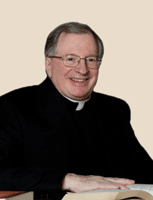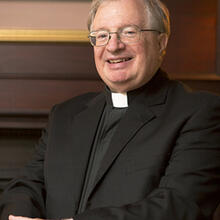It was the feast of the Ascension, and I was searching for a half-remembered quotation for my homily at the evening Mass. I remembered it appearing in Pierre Teilhard de Chardin’s The Divine Milieu. I didn’t find the quote in time for the homily; I did find and use another. But my quick search led me to take up Teilhard’s spiritual masterpiece once again, feeling I had much to re-learn from this spiritual master.
If I had to list a handful of books that have influenced my life, The Divine Milieu would be at the top. I read it in the early 1960s, just as the Second Vatican Council was taking place. I inhaled its intoxicating this-worldly mysticism. I was strengthened by its explanation of the spiritualization of our activities, not a strong suit in the penitential spirituality of the post-Suppression (1773-1814) Jesuits.
The Divine Milieu offered a symphony of themes that echoed the masters of Western spirituality, the Bible—especially St. Paul—and the divine liturgy. As in monastic theology, phrases, mostly in Latin, dot the text, displaying a mind that has imbibed the Scripture in lectio divina, been formed by the recitation of the liturgy and is practiced in savoring the meaning of the simplest phrase. At the same time, there are passages that read like scholastic responsa, staking out Teilhard’s own orthodox mystical position against heretical alternatives sometimes ascribed to him. All the same, the book reads like a prose poem.
The Divine Milieu is a whole spirituality for the whole person from a Jesuit who found his identity at the heart of the church, even though as a paleontologist he worked at the farthest edges of its mission. “This little book,” he wrote, “does no more than recapitulate the eternal lesson of the church in the words of a man who, because he believes himself to feel deeply in tune with his own times, has sought to teach how to see God everywhere, to see him in all that is most hidden, most solid and most ultimate in the world.” Like St. Ignatius Loyola, the Jesuit founder, he sought “to find God in all things” and to teach others to do the same.
Sometimes I think of The Divine Milieu as the Spiritual Exercises, Ignatius’ classic manual of the spiritual life, re-worked for modern times. The whole book is an extrapolation of Ignatius’ “Contemplation to Attain Divine Love.”
What is strikingly different is that Teilhard does not dwell on the life and death of Jesus the way Ignatius did. The Christ of The Divine Milieu is the cosmic Christ of St. Paul, the glorified Christ as the fullness of creation to be united with God at the end of time. But while Teilhard does not contemplate the details of Christ’s life, his spirituality is highly incarnational. Its whole effort is to help us see Christ at work in all of life (and history). Seeing Christ’s action in matter was vital for him as a scientist, but perceiving him in our creative human activity was all the more important, both because we mistakenly tend to regard our creativity as a threat to God, but also because it is through human endeavor that creation comes to Christ and Christ brings it to the Father.
•••
With this issue we bid farewell to Jim McDermott, S.J., who is moving on to do studies in filmmaking. We are grateful for Jim’s time with us. His writing and videography have exhibited skills even he may not have imagined he had. He has authored some of our most difficult editorials and enriched the editors and our readers with a knowledge of America’s past. We wish him well.








